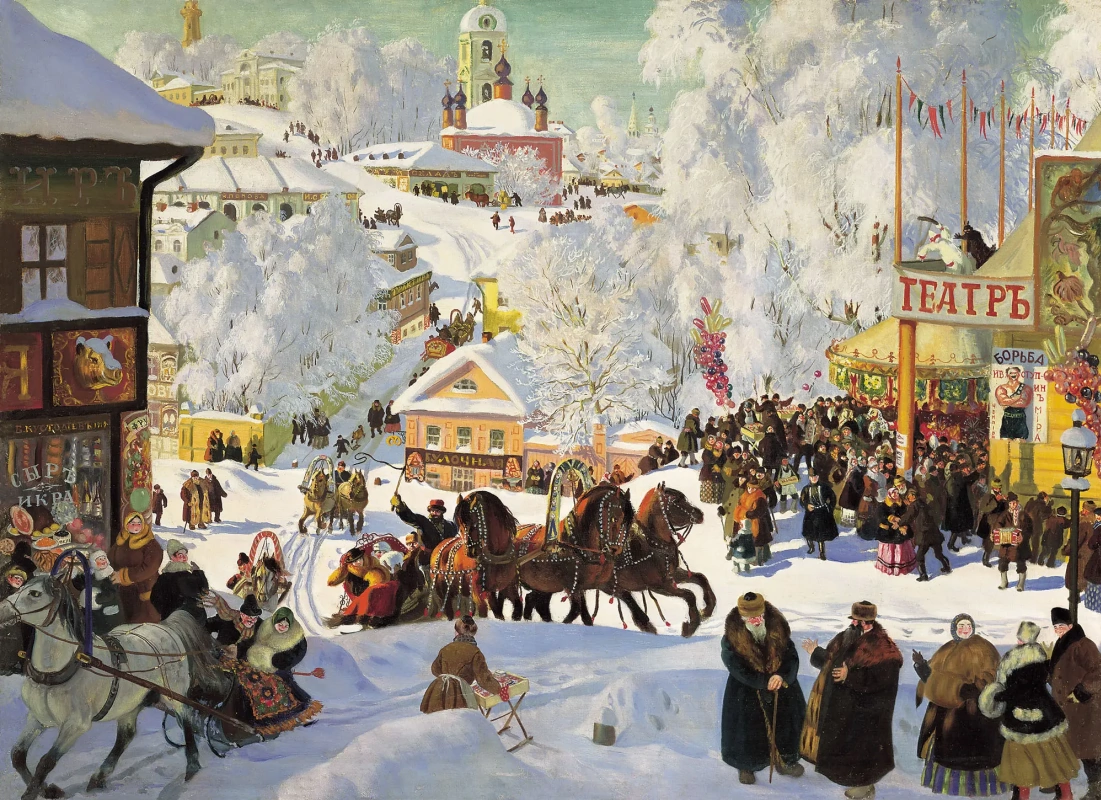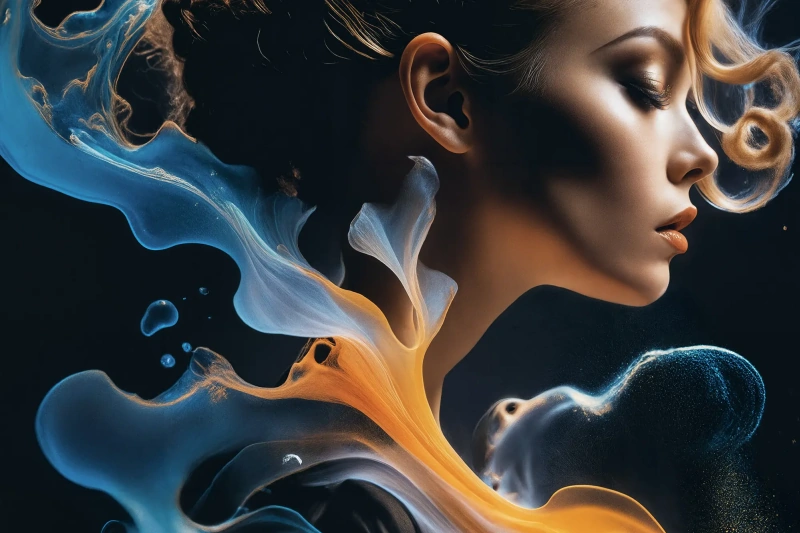Looking through paintings by famous artists, we learn how Slavic people celebrate Shrovetide (Maslenitsa).

Shrovetide (Maslenitsa) is one of the merriest holidays in Slavic countries. Originally a pagan rite to celebrate the end of the winter, it later was approved by Orthodox Church as secular festivities during the week before the Great Lent.
Maslenitsa (Pancake ride)
1919, 71×98 cm
At the beginning of the eighteenth century, Russian Tsar Peter the First, issued a decree so that Russian Empire
started to party Maslenitsa in a European fashion. He loved a rackety youthful merry-making and made of this feast the grand holidays on a royal scale.
Son of a Russian General, Friedrich Bergholz gave us a detailed description of an unusual procession headed by the Russian Tsar on Maslenitsa, consisting of ships of the Russian fleet, set on the sleigh and drawn by horses:
"His Majesty had fun in a truly royal manner. Lacking opportunities here in Moscow to rасе on waters as he did in St. Petersburg, and despite the winter, he, together with his small nimble boatswain, nonetheless has been maneuvering in a way that was possible on sea only, making his way along the snowy road. When we rode the wind, he dissolved all the sails which surely helped 15 horses to drag the ship."
"His Majesty had fun in a truly royal manner. Lacking opportunities here in Moscow to rасе on waters as he did in St. Petersburg, and despite the winter, he, together with his small nimble boatswain, nonetheless has been maneuvering in a way that was possible on sea only, making his way along the snowy road. When we rode the wind, he dissolved all the sails which surely helped 15 horses to drag the ship."
On the first day of Maslenitsa people cook pancakes that resemble the Sun. They say, “There is no Maslenitsa without pancakes!” The word 'Maslenitsa' itself is a derivative of 'butter', in which you need to soak a pancake to eat.
From the times of Peter the First, Maslenitsa has become a secular holiday celebrated on a grand scale!
In addition to the abundant food and drink, people had plenty entertainments outdoor.
Some enjoyed riding on horse sledges.
In big cities, the huge ice slides were constructed to enjoy tobogganing.
In smaller places, young people sledged down the snowy hills.
There was an interesting game "Storming a snow fortress."
Usually a group of peasants, sturdy fellas mostly, built a snow fortress or a town with gates and towers on the fields or on frozen rivers near the villages. Then they divided into defenders and attackers of a newly built installation. When attackers run forward, defenders used their shovels and brooms to strew them with snow, waving and beating with their branches and brooms. They fired their guns in the air, trying to scare the horses and not to miss anyone through the gates. Someone who eventually broke through defense of the strong guys, was the game’s winner. Often such merrymaking ended with injuries, however, it still was popular, because it brought people a sense of joy and fun.
The capture of snow town
1891, 156×282 cm
Other guys received their dose of adrenaline in the fist fights.
There were plenty of other entertainments at Maslenitsa fairs: contests with prizes, carnival masquerade processions, theatrical performances, booths, endless jokes, songs, folk music and other festivities.
On the seventh day, the feasts' week culminated in the burning of a straw dummy of Maslenitsa dressed up in old clothes.
Since the very morning and during the day, people asked for forgiveness for all their wrongs during a year. By the evening, they cleaned their houses and then solemnly burnt a straw dummy of Maslenitsa and the remains of a festive meal. This day is called 'Forgiveness Sunday.'
This ritual has come from the pagan times, when slavic tribes burnt the straw dummy of Winter in a day of vernal equinox to hasten the coming of Spring.
Sometimes, while Maslenitsa was on its way, people occasionally died from drinking, overeating or in a fight. A little attention was paid to this. People said, "He did not manage to live, so he died." You need to have a strong health to party like this in the old days…
Today, people still cook pancakes that resemble Sun and celebrate Maslenitsa on the weekend with families, playing outdoors, sledging with kids from the snowy hills, roaming at fairs, singing songs, listening to folk music and drinking mulled wine. There are many public events these days. And yes, there is still a tradition to ask for forgiveness on Sunday and to burn the straw dummy of Maslenitsa. Now people do this in certain parks under the keen attention of the fire brigades.
Today, people still cook pancakes that resemble Sun and celebrate Maslenitsa on the weekend with families, playing outdoors, sledging with kids from the snowy hills, roaming at fairs, singing songs, listening to folk music and drinking mulled wine. There are many public events these days. And yes, there is still a tradition to ask for forgiveness on Sunday and to burn the straw dummy of Maslenitsa. Now people do this in certain parks under the keen attention of the fire brigades.
In 2017, Maslenitsa is celebrated from February 20 ending with a Forgiveness Sunday on February, 26.
Written by Natalia Korchina. Main illustration: Timkov Alexey, Maslenitsa, 2003.




































